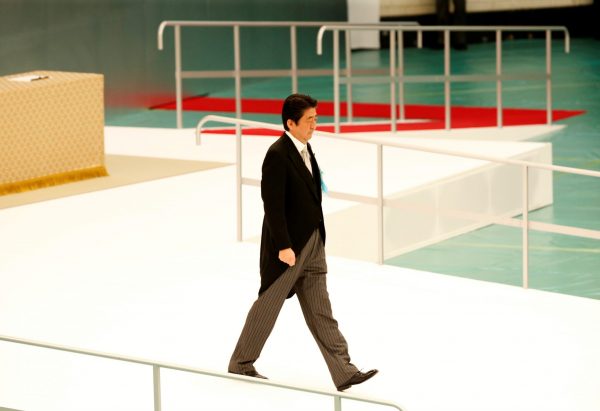But for those who have long observed Japanese politics, that Abe has wielded the prime ministership so strongly is itself a surprise as the role has typically been seen as weak and passive. What are the reasons for this shift?
Japan’s 1947 constitution explicitly prescribes the prime minister as a powerful actor. It is written that executive power shall be vested in the cabinet, which consists of the prime minister and other ministers of state. The prime minister appoints and removes the ministers of state, and as the representative of the cabinet, the prime minister submits bills to the Diet — Japan’s national parliament — and supervises all administrative branches. The prime minister’s signature is required on all laws and cabinet orders.
Despite this constitutional position, political scientists and other observers have long regarded the position of post-war Japanese prime ministers as weak. This provokes discussion as to which actors wield more influence — the bureaucrats or the politicians?
Despite post-war reforms, many argued — including Kiyoaki Tsuji —that the ‘emperor’s bureaucracy’ had greater power. Chalmers Johnson attributed Japan’s economic development to its powerful bureaucrats. But since the 1980s, initiated by Michio Muramatsu, the bureaucratic power model has been gradually replaced with a political party-dominant model, in which Japanese bureaucrats are indeed active but function only as the agents of elected politicians — especially those of the LDP.
Both of these models either implicitly or explicitly acknowledge that the Japanese prime minister is a weak and passive leader compared to Japan’s constitutional prescription or other foreign leaders.
But this situation has changed since the 2000s. Scholars have noticed the advent of a stronger brand of prime minister and their executive office. Because this phenomenon coincided with the Junichiro Koizumi administration, it was initially attributed to his personality. But it has been gradually understood that the institutional reforms implemented since the late 1990s have brought about this new model of a strong prime minister.
These institutional changes include the Ryutaro Hashimoto administration’s reforms (1996–98), which came into effect in 2001 and aimed to empower the prime minister’s authority and direct staff. The Morihiro Hosokawa administration reforms of 1996 also affected the prime minister’s leadership by replacing the multi-member electorate system with the single-member electorate system in the lower house. Since the leader of the ruling party generally holds the prime ministership, the reform enhanced their authority within their own party.
The reforms have gradually worked their magic, and the Japanese political arena now resembles a Westminster-type adversarial democracy.
Prime Minister Abe has also left his own personal mark through centralisation of diplomatic and national security policy. His administration established the National Security Council (modelled after its US counterpart) and the National Security Secretariat to centralise security policy. Further, macroeconomic policy and budget formulation are increasingly performed by the Cabinet and Cabinet Office, with the Ministry of Finance and LDP being less influential.
But is the increasing strength of the prime ministership stable, or does it depend on the person at the helm? According to recent studies in Japanese, the policy process of the previous Democratic Party administration was to some degree as centralised as that of the current administration. Hence, the series of institutional reforms since the late 1990s have worked regardless of the ruling party or the prime minister in question. In the same vein, strong prime ministerships may well continue after Abe leaves office.
An additional key development is the establishment of the Cabinet Bureau of Personnel Affairs in 2014. This now allows the prime minister and executive staff to supervise the appointment of approximately 600 senior public officials that were previously managed by their respective ministries. Although more time and data are needed to investigate the effects of this bureau, it has so far been reported that the public servants are more sensitive about the prime minister and executive staff’s intentions than ever before.
2017 marks the 70th anniversary of the Japanese constitution’s enactment. It has been immune from any formal amendment, often being called ‘the oldest constitution in the world’. That said, the governance reforms regarding the prime ministership are something equivalent to constitutional reform. As Japan inches closer to the constitutionally implied strong prime ministership, there will be more questions raised about whether this powerful leadership model is actually accepted and welcomed by the public.
Shuntaro Iizuka is a PhD Candidate at the School of Social and Political Sciences, University of Melbourne.
This article is an extract from the author’s presentation at the 2017 Biennial Conference of the Japanese Studies Association of Australia.


The so called ‘school scandals’ suggest that public servants are alert as well as responsive to the wishes, both expressed and implied, of the Prime Minister. Koike’s recent victory in the Tokyo election leave one wandering to what extent Abe’s power will decline in the coming months.